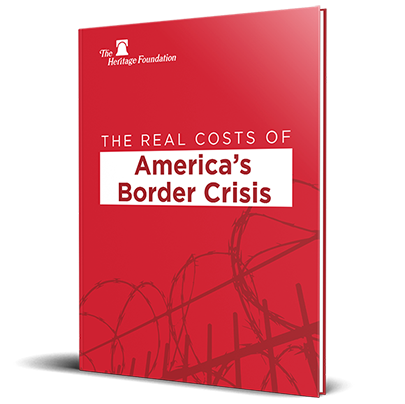The Issue
- Despite some useful appropriations specifically focused on the Indo-Pacific, including funding some of U.S. Indo-Pacific Command’s (INDOPACOM) unfunded requirements and security assistance for Taiwan, this bill does not prioritize the region.
- The funding allocated for the Indo-Pacific is a small fraction of the overall appropriations. Most of the defense investments are focused on Europe and the Middle East. The bill includes $7.9 billion in non-military Economic Support Fund appropriations for budgetary support to Ukraine’s government—nearly double the entire Indo-Pacific portion.
- The defense production and inventory expansion enabled by those investments may one day be used to deter China. As written, however, it will focus first and foremost on the other regions, which will only delay efforts to avert war in the Indo-Pacific.
- Appropriations for the use of Presidential Drawdown Authority (PDA) to arm Taiwan is the most effective way to arm Taiwan quickly, and this funding is therefore a step forward. However, there is nothing in the bill to prevent the Administration from continuing to send weapons to Ukraine even if Taiwan requires them as well.
- This bill continues the Administration’s policy of prioritizing the arming of Ukraine over the arming of Taiwan.
Indo-Pacific Funding: $4.4 Billion
$542 million for U.S. Indo-Pacific Command (INDOPACOM) unfunded requirements. This includes funding for Joint Training Team Taiwan, Joint Task Force Micronesia, operationalizing near-term space control, Guam Defense System, and Persistent Targeting for Undersea.
Analysis. Several of these initiatives are directly linked to the ability of U.S. forces to deter or, if necessary, defeat a Chinese invasion of Taiwan. These items should have been included in the President’s fiscal year (FY) 2024 budget request.
$1.9 billion to replace weapons sent to Taiwan under Presidential Drawdown Authority (PDA). Under PDA, the Administration can send weapons directly from U.S. stockpiles to an ally or partner in need. It is one of the quickest and most effective ways to arm a frontline state. Authorization for the use of Presidential Drawdown Authority (PDA) to arm Taiwan is the most effective way to arm Taiwan quickly. This funding is therefore a step forward. However, there is nothing in the bill to prevent the Administration from continuing to send weapons to Ukraine even if Taiwan requires them as well.
Analysis. The United States has a vested interest in arming Taiwan with the asymmetric defense capabilities that Taiwanese forces require to delay, degrade, and deny a Chinese invasion, including mobile anti-ship missiles, air and missile defenses, long-range fires, anti-armor weapons, and their enablers. Given the severity of the Chinese threat to Taiwan, PDA is the best option—and may be the only option—for delivering many of these capabilities to Taiwan in time to deter or defeat a Chinese invasion over the next few years. The United States has already depleted its stockpiles by sending so many of them to Ukraine. While the United States has begun to produce more, it will take years to replenish.
$2.0 Billion for Foreign Military Financing (FMF) for the Indo-Pacific Region
Analysis. An additional $2 billion in FMF for the Indo-Pacific is 50 percent of the amount Congress has already authorized but failed to appropriate for Taiwan FMF alone for FY 2023 and FY 2024. Ultimately, FMF grants have limited near-term utility for Taiwan, though they might help to shape Taiwan’s defense capabilities over the medium and long terms. Many of Taiwan’s existing FMS purchases, funded by Taiwan’s own government, are significantly delayed. While FMF could also potentially be used to acquire weapons from third countries for Taiwan, drawing down U.S. stocks remains the most certain tool for hardening Taiwan’s defense in the immediate term. This provision might be helpful for other partners, such as the Philippines, that are hard-pressed to fund the capabilities they need to face mounting Chinese aggression.
The bill authorizes FMF loans for the Indo-Pacific region, previously authorized for Ukraine and NATO countries, while also doubling the ceiling of that authority to $8.0 billion. In addition to grants, FMF can be used to extend loans to acquire defense capabilities. This provision’s utility for the Indo-Pacific remains unclear pending further details. The Administration already has the authority to extend FMF loans to Taiwan through the Taiwan Enhanced Resilience Act. Other recipients of security assistance in the Indo-Pacific typically receive FMF support in the form of grants, not loans. As written, this provision may have little application to the Indo-Pacific.
No money to fund the amended Compact of Free Association (COFA) agreements. The COFA agreements between the United States, the Federated States of Micronesia, the Republic of the Marshall Islands, and the Republic of Palau grant the U.S. unique defense privileges and rights, including strategic denial rights, in exchange for economic assistance and access to federal programs. In June 2023, the Compact of Free Association Amendments Act requested $7.1 billion to fully fund the renewed compacts for all three countries across 20 years. Key economic provisions of the COFA agreements expired last year.
Analysis. Not funding the COFA agreements is an act of strategic malpractice. The COFAs allow the U.S. unilaterally to block China from entering the territorial waters of the COFA states. The U.S. also has exclusive rights to construct military sites in the COFA states, which could be used during a military contingency in the Indo-Pacific. Because of the manner in which the prior compacts were funded, Congress needs to offset about $2.3 billion for all three countries across 20 years.





